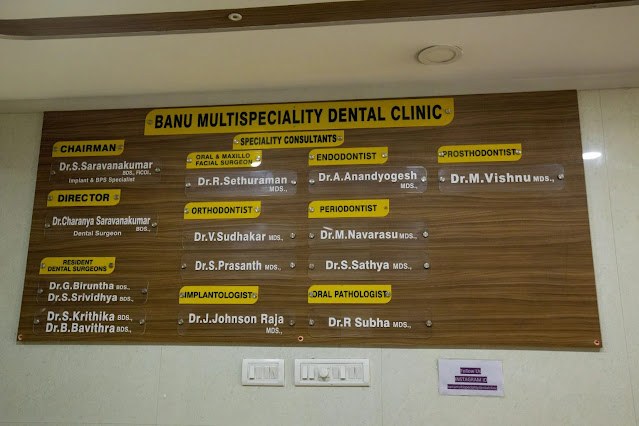When is Tooth Crown Treatment recommended?-Banu Dental
When is Tooth Crown Treatment recommended?-Banu Dental
Tooth crown treatment, also known as dental crown treatment, is recommended in various situations to restore and protect a damaged or weakened tooth. Here are the common scenarios when tooth crown treatment might be advised:
### **1. **Tooth Decay:**
- **Extensive Decay:** When a tooth has a large cavity that cannot be adequately restored with a filling, a crown provides the necessary coverage and support.
### **2. **Fractured or Cracked Teeth:**
- **Fractures:** Teeth with significant fractures or cracks that compromise their strength and stability benefit from crown placement to prevent further damage or splitting.
- **Post-Root Canal:** Teeth that have undergone root canal therapy are often weakened and are subsequently crowned to protect them from breakage. Dental Hospitals in Tamilnadu
### **3. **Large Fillings:**
- **Replacement:** If a tooth has a large filling, and there is a risk of the filling breaking down or the tooth fracturing, a crown is placed to provide reinforcement and support.
### **4. **Weakened Teeth:**
- **Structural Weakness:** Teeth weakened due to structural issues, such as malformed enamel or hypoplasia, are often protected with crowns.
- **Worn Down Teeth:** Teeth that are significantly worn down due to grinding or erosion may require crowns to restore their shape and function.
### **1. **Tooth Decay:**
- **Extensive Decay:** When a tooth has a large cavity that cannot be adequately restored with a filling, a crown provides the necessary coverage and support.
### **2. **Fractured or Cracked Teeth:**
- **Fractures:** Teeth with significant fractures or cracks that compromise their strength and stability benefit from crown placement to prevent further damage or splitting.
- **Post-Root Canal:** Teeth that have undergone root canal therapy are often weakened and are subsequently crowned to protect them from breakage. Dental Hospitals in Tamilnadu
### **3. **Large Fillings:**
- **Replacement:** If a tooth has a large filling, and there is a risk of the filling breaking down or the tooth fracturing, a crown is placed to provide reinforcement and support.
### **4. **Weakened Teeth:**
- **Structural Weakness:** Teeth weakened due to structural issues, such as malformed enamel or hypoplasia, are often protected with crowns.
- **Worn Down Teeth:** Teeth that are significantly worn down due to grinding or erosion may require crowns to restore their shape and function.
### **5. **Cosmetic Reasons:**
- **Discoloration:** Severely discolored or stained teeth that do not respond to teeth whitening procedures can be covered with crowns for aesthetic reasons.
- **Misshapen Teeth:** Crowns are used to reshape misshapen or disproportionately small teeth, improving the overall appearance of the smile.
### **6. **Tooth with a Large Filling or Root Canal:**
- **Support for Large Fillings:** Teeth with large fillings might require crowns to provide support and prevent the filling from dislodging.
- **Post-Root Canal:** After a root canal treatment, the tooth often becomes brittle and is susceptible to fractures. A crown provides strength and protection.Best Dental Clinics in Kumbakonam
### **7. **Implant Restoration:**
- **Dental Implants:** Crowns are placed on top of dental implants to replace missing teeth. They function and appear like natural teeth.
### **8. **Dental Bridge Support:**
- **Bridge Attachment:** Crowns are used as abutments (supporting structures) for dental bridges to replace missing teeth. The bridge is anchored by crowns on adjacent natural teeth.Best Dental Doctors in Kumbakonam
### **9. **Children with High Cavity Risk:**
- **Protection:** In children with a high risk of cavities or difficulty maintaining good oral hygiene, crowns can protect vulnerable baby teeth from extensive decay.
Your dentist will conduct a thorough examination, including X-rays, to determine if a tooth crown is the appropriate treatment for your specific dental condition. It's essential to follow your dentist's recommendations to maintain your oral health effectively.


Comments
Post a Comment